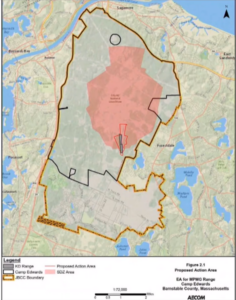
A suture-tagged squid during preliminary trials of the BIMS interface. Photo credit: Aran Mooney, Woods Hole Oceanographic Institution
WOODS HOLE – Scientists with the Woods Hole Oceanographic Institution have created an effective new method of tracking marine animals by developing a Bioadhesive Interface for Marine Sensors, or BIMS, which has shown promise on numerous species.
According to the study published in Nature Communications, the hydrogel-based adhesive
can conform to the body shape of its host, making it less invasive than traditional tagging and applicable to soft and fragile species that have traditionally been difficult to tag without harming the animal.
The new method is also significantly quicker than previous tagging methods, as it can be performed in under half a minute, a remarkable decrease from past methods which can take up to 8.5 minutes to install while causing distress to the animal with which it is being attached.
Tests ethically performed on squids, skates, flounders, lobsters, and other distinctly tissued creatures at Woods Hole Oceanographic Institution as well as in the Azores Islands of Portugal found that the BIMS can maintain their strength and stability for up to three days before detaching while providing minimal disruption to the animal’s group and individual behaviors.
Scientists will use the interface to collect information on migration patterns, habitat changes, and energy use of the tagged species, while also collecting oceanographic data critical to understanding climate change and resource management.
To view the study, click here.
























